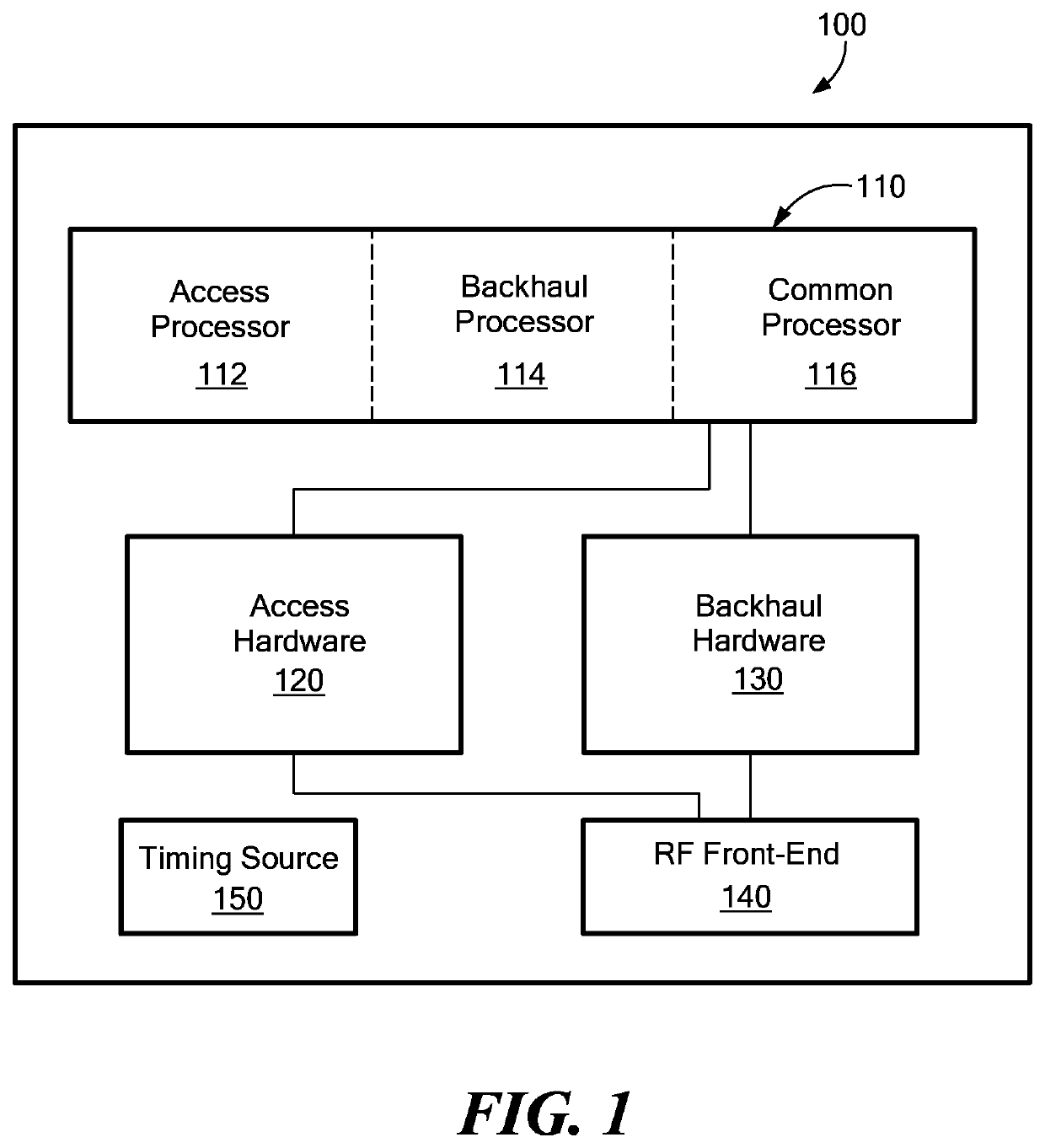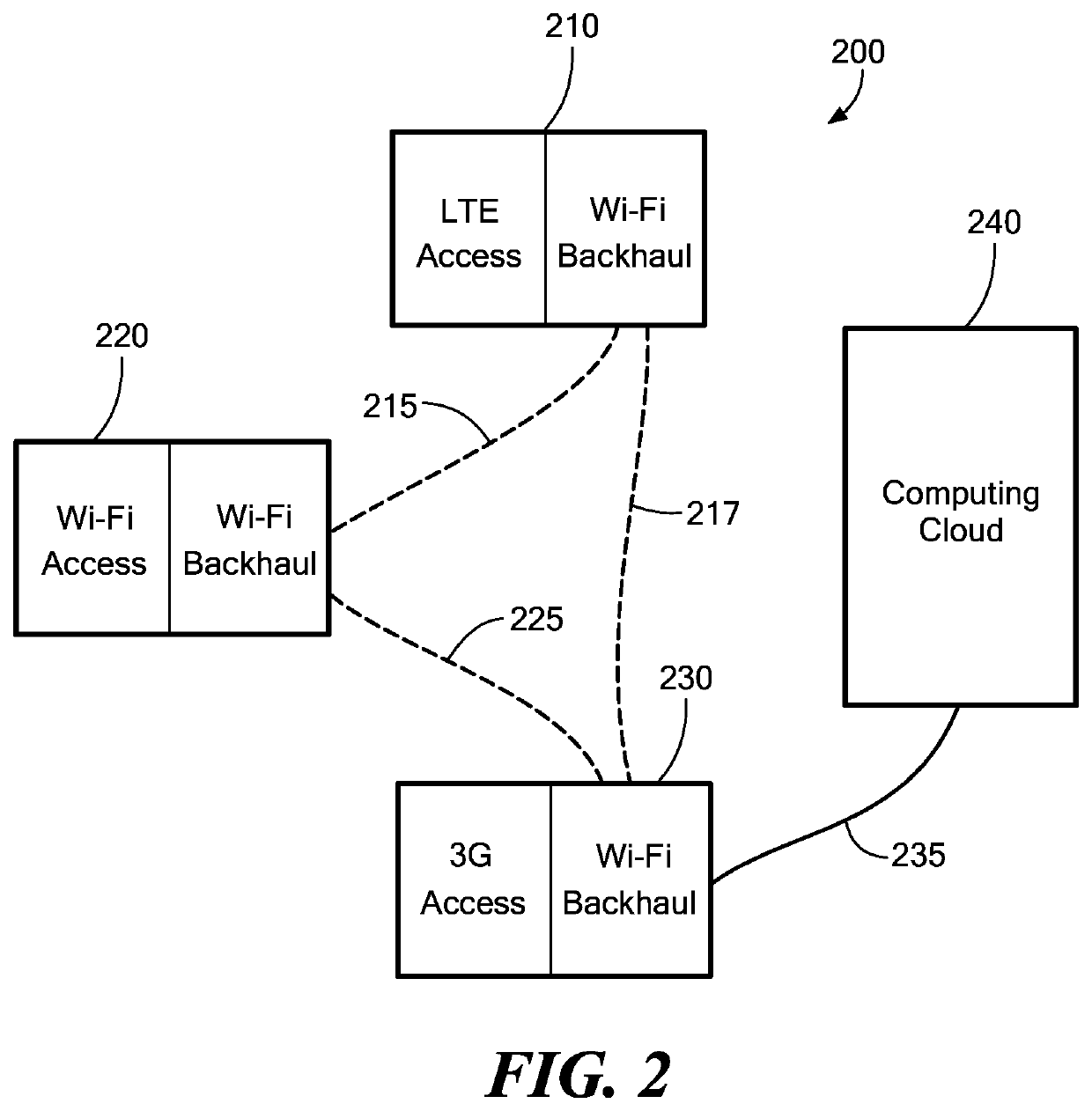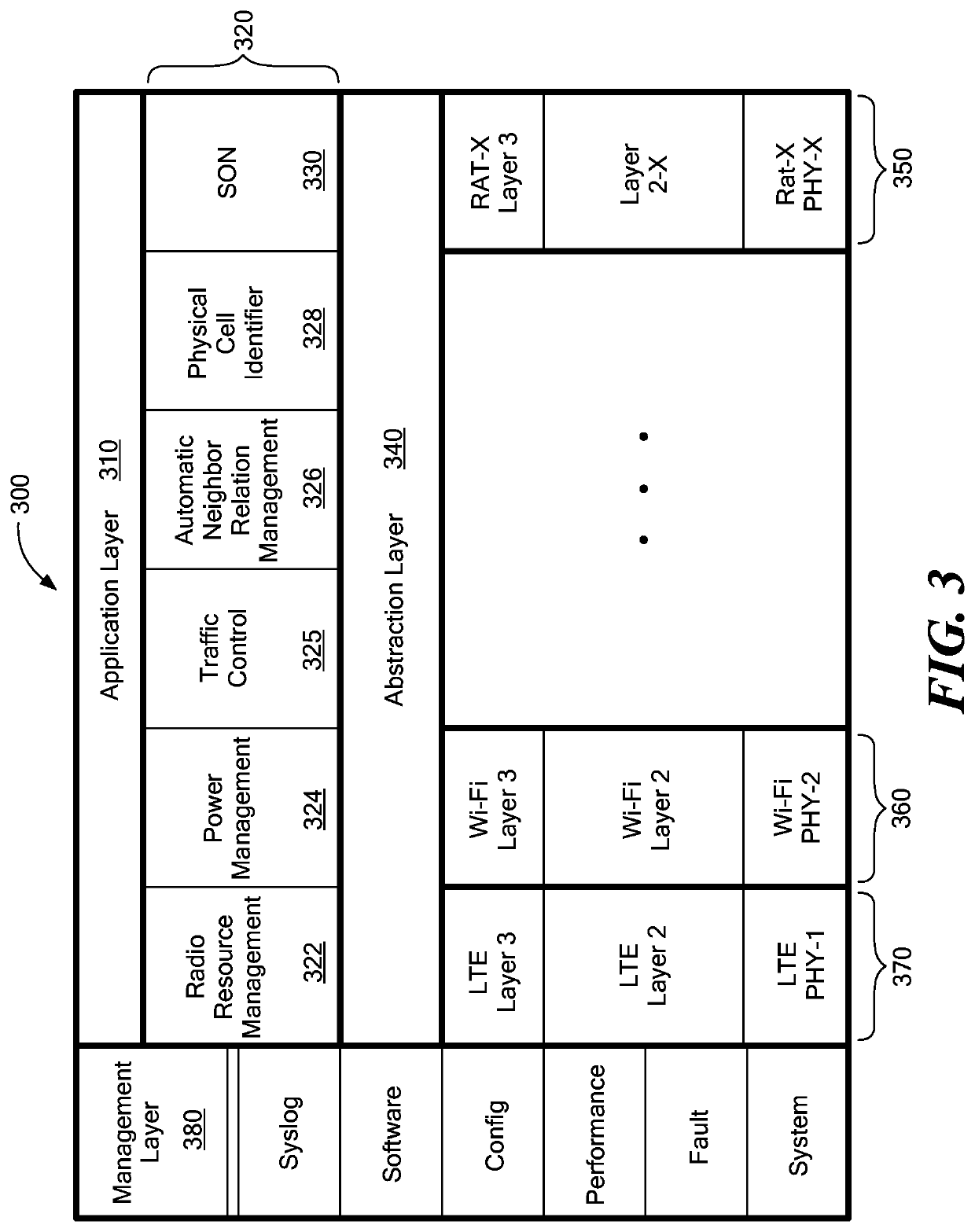Heterogeneous Mesh Network and a Multi-RAT Node Used Therein
a mesh network and heterogeneous technology, applied in the field of mesh networks, can solve the problems of not always being able to transparently connect gateways, not finding an efficient way to interconnect these networks, and cellular networks are still not able to handle the increased demand for telephone and data services, so as to facilitate the computation of network topology and/or path determination
- Summary
- Abstract
- Description
- Claims
- Application Information
AI Technical Summary
Benefits of technology
Problems solved by technology
Method used
Image
Examples
Embodiment Construction
[0018]The embodiments of this invention differ conceptually from prior art gateway paradigms because the custom designed layer stacks of this invention abstract the protocols that make each radio technology unique, thereby creating an agnostic data set that can be seamlessly routed throughout a wireless network. In other words, in the embodiments described herein, we have created an adaptation layer that spans all MAC layers so that we can bridge between heterogeneous access layers. In embodiments of this invention, individual nodes operating on different protocols, different frequencies, different hardware manifestations, or different duplexing schemes can be part of a dynamic mesh network. This dynamic mesh network uses a single routing table for heterogeneous nodes contained within the mesh network.
Mesh Networks
[0019]The term “mesh network” is typically defined as a network comprised of two or more nodes wherein the nodes act as routers. Illustratively, an online encyclopedia fro...
PUM
 Login to view more
Login to view more Abstract
Description
Claims
Application Information
 Login to view more
Login to view more - R&D Engineer
- R&D Manager
- IP Professional
- Industry Leading Data Capabilities
- Powerful AI technology
- Patent DNA Extraction
Browse by: Latest US Patents, China's latest patents, Technical Efficacy Thesaurus, Application Domain, Technology Topic.
© 2024 PatSnap. All rights reserved.Legal|Privacy policy|Modern Slavery Act Transparency Statement|Sitemap



